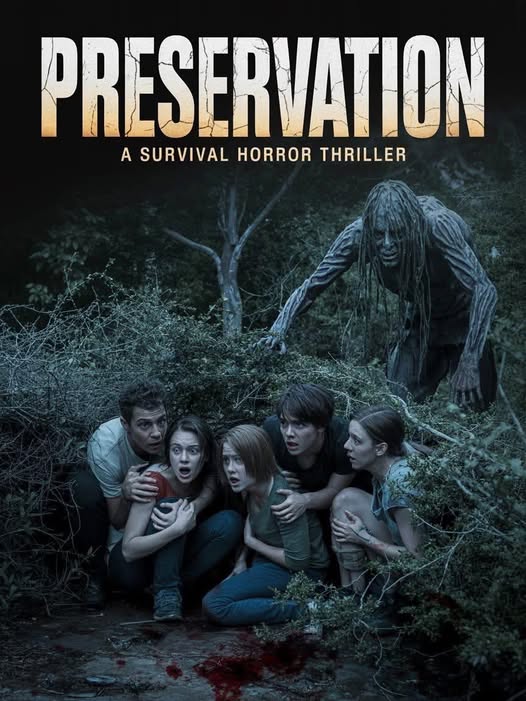Preservation (2014) Movie Review: A Gripping Survival Thriller That Keeps You on Edge

Related Movies:
Preservation (2014), directed by Christopher Denham, is a heart-pounding survival thriller that plunges viewers into the depths of a menacing forest where danger lurks at every turn. This indie horror gem takes a simple premise—a hunting trip gone wrong—and transforms it into a tense, psychological battle for survival. With its relentless pacing, chilling atmosphere, and exploration of primal human instincts, Preservation is a must-watch for fans of survival horror and suspenseful thrillers. In this 1000-word review, we’ll dive into the plot, characters, themes, and cinematic elements that make Preservation a standout film, while optimizing for SEO to help you discover why this movie deserves your attention.
Plot Overview: A Hunting Trip Turns Deadly
Preservation follows three urbanites—brothers Sean (Pablo Schreiber) and Mike (Aaron Staton), along with Mike’s wife, Wit (Wrenn Schmidt)—as they venture into a remote nature reserve for a weekend hunting trip. Seeking to unplug from their city lives, the trio hopes for bonding and adventure. However, their plans unravel when they awaken to find their gear stolen and cryptic markings on their foreheads. It quickly becomes clear that they are no longer the hunters but the hunted, stalked by an unseen predator with deadly precision.
The film wastes no time escalating the tension, thrusting the characters into a desperate fight for survival. As they navigate the unforgiving wilderness, paranoia and distrust begin to fracture their relationships, forcing each character to confront their deepest fears and instincts. The plot is lean yet effective, maintaining a tight 90-minute runtime that keeps viewers engaged with its relentless pace and unpredictable twists.
Characters: Relatable Yet Flawed
The strength of Preservation lies in its well-developed characters, who feel authentic despite their flaws. Wrenn Schmidt delivers a standout performance as Wit, a strong-willed anesthesiologist whose resourcefulness and determination become the group’s anchor. Schmidt portrays Wit’s transformation from a composed professional to a fierce survivor with nuance, making her a compelling protagonist.
Pablo Schreiber’s Sean, a war veteran with a troubled past, adds emotional depth to the story. His struggle with PTSD and strained relationship with Mike provide a layer of complexity, highlighting the fragility of human connections under pressure. Aaron Staton’s Mike, the more pragmatic and cautious of the brothers, serves as a foil to Sean’s impulsiveness, but his own vulnerabilities surface as the situation deteriorates.
The dynamic between the three characters drives the narrative, with their interactions revealing themes of trust, betrayal, and survival. While the film doesn’t delve deeply into their backstories, it provides enough context to make their decisions and conflicts relatable, ensuring viewers remain invested in their fate.
Themes: Primal Instincts and Human Nature
At its core, Preservation is a meditation on human nature and the instincts that emerge when survival is at stake. The film explores how fear can unravel even the strongest bonds, turning allies into adversaries. The forest setting serves as a metaphor for the untamed aspects of human behavior, stripping away societal norms to reveal raw, primal instincts.
Betrayal is another central theme, as the characters’ trust in one another erodes under the pressure of their dire circumstances. The film also touches on the consequences of underestimating nature and the hubris of modern humans who believe they can conquer the wilderness. These themes resonate universally, making Preservation more than just a survival thriller—it’s a reflection on what it means to be human when pushed to the brink.
Cinematic Elements: Atmosphere and Suspense
Director Christopher Denham masterfully crafts an atmosphere of dread, using the forest as both a setting and a character. The cinematography, with its tight shots of dense foliage and eerie silences, creates a claustrophobic sense of entrapment. The sound design amplifies the tension, with rustling leaves and distant snaps keeping viewers on edge, anticipating the next threat.
The film’s pacing is one of its strongest assets. It balances moments of quiet suspense with explosive action, ensuring the audience remains gripped throughout. The cat-and-mouse dynamic between the protagonists and their unseen pursuer is executed with precision, delivering heart-stopping chases and shocking reveals. While Preservation relies on minimal gore, its psychological horror elements are chilling, proving that sometimes what you don’t see is far scarier than what you do.
The editing is sharp, with quick cuts during action sequences that heighten the adrenaline. However, the film occasionally lingers on quieter moments, allowing the weight of the characters’ decisions to sink in. This balance keeps the narrative engaging without overwhelming the viewer.











